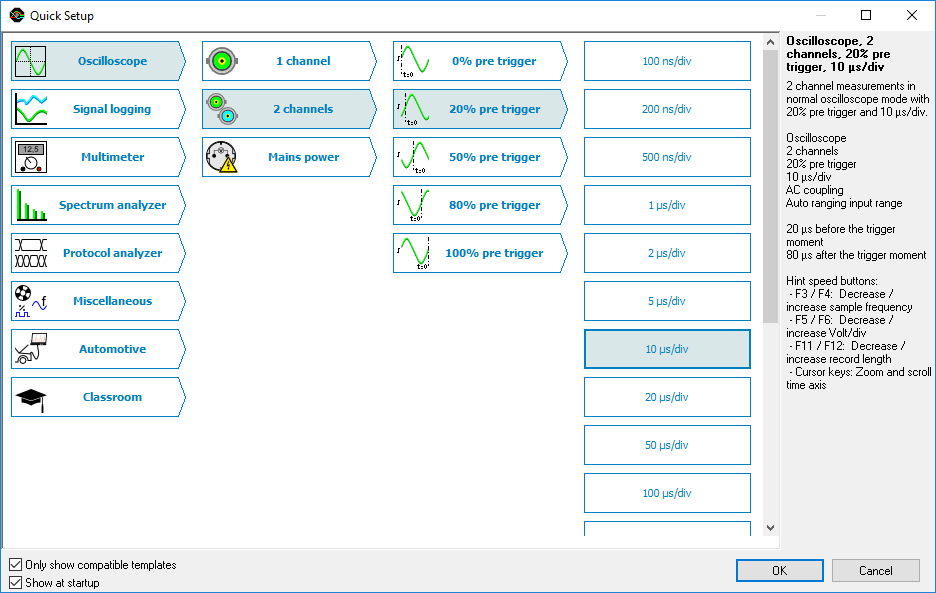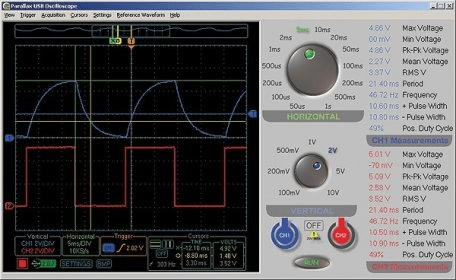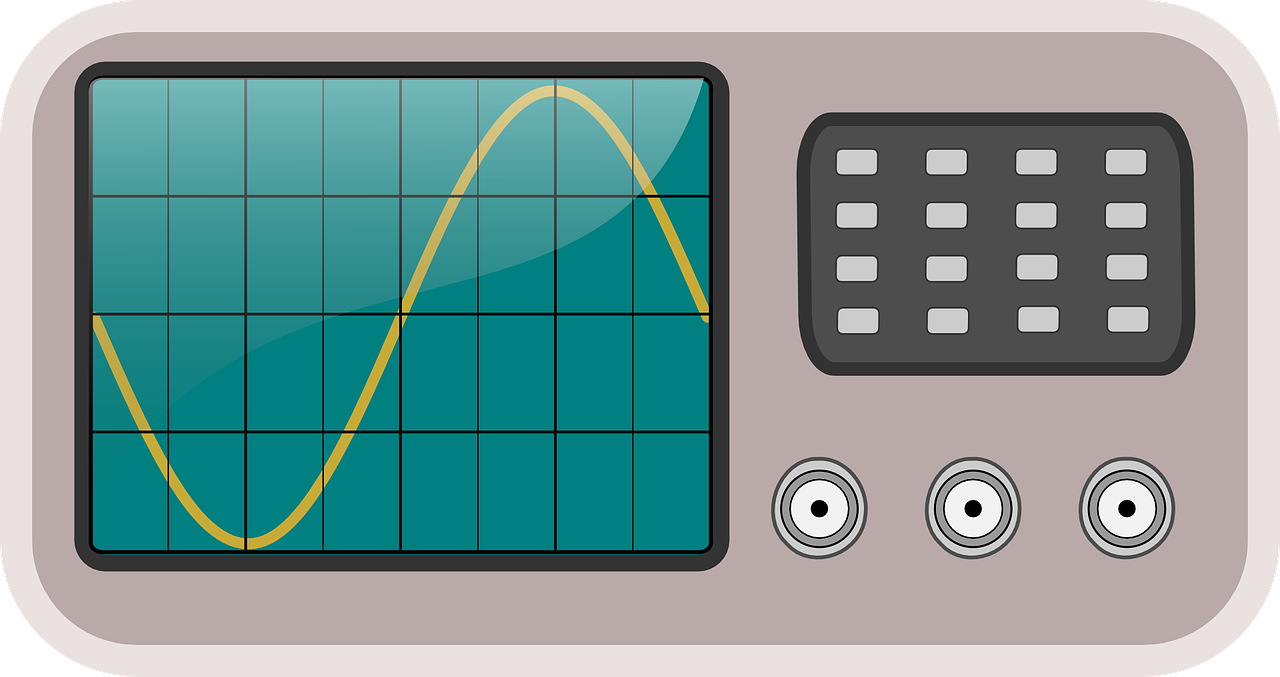The BitGen Control Panel is a DSP Waveform and Timing Generator application for some BitScopes. It makes available the Waveform Generator Library in an easy to use software application and includes an integrated oscilloscope. It supports all seven operating modes of the BitGen module in BS120 via a comprehensive parameter setup page. No programming is. ISpectrum - Macintosh Audio Spectrum Analyzer. ISpectrum is an easy to use audio spectrum analyzer that allows you to view live audio in a standard frequency plot, a stereo oscilloscope view and a waterfall display.
Am application that acts as an oscilloscope.
Oscilloscope is a compact application that allows you to visualize the audio input waveform by using your sound card. It is designed to emulate a standard oscilloscope in order to analyze a sound signal in real time.

In order to use the program you need to connect the sound measurement equipment to your sound card. You can use a simple microphone or other devices that produce the sound signal that you want to analyze.
The main window of the application displays the graphical representation of the sound signal and allows you to configure the gain, delay and sweep parameters. You can use multiple graph types in order to study the real time spectra.

The captured data can be saved to a DAT file in order to compare different signals or different intervals for the same sound input. You can also copy the waveform data to the clipboard in order to use it in other programs.
The application includes a spectrum analyzer that displays the amplitude spectrum for the sound received through the channels. When working in dual trace mode, the user can also use the phase adjustment feature in order to adjust the data before phase shift measurements.
Although the interface is clean and provides access to all the controls, this app is designed for the users with previous experience in sound signal and spectra analysis. If you want to understand the role of certain controls, the included documentation provides you with a general description.

Oscilloscope requires no installation which allows you to run it from a removable device when you need to visualize or analyze a sound signal.
Filed under
Oscilloscope was reviewed by Sorin CirnealaIpad Oscilloscope
Oscilloscope 2.51
 add to watchlist
add to watchlistIpad Oscilloscope App
send us an update- runs on:
- Windows All
- file size:
- 88 KB
- filename:
- PCosc251.zip
- main category:
- Science / CAD
- developer:
top alternatives FREE
Audio Oscilloscope App
top alternatives PAID
This online virtual oscilloscope allows you to visualise live sound input and get to grips with how to adjust the display. If you find this useful, our online spectrum analyser may also be of interest to you.
An oscilloscope is a useful tool for anyone working with electrical signals because it provides a visual representation of the signal's shape, or waveform. This allows you to measure properties of the wave, such as amplitude or frequency.
The initial signal above is a 200Hz sine wave, which has an amplitude of 5 volts. The frequency of this wave can be adjusted by using the 'Input Wave Frequency' slider.(You can also choose to display a square wave.)
If you are browsing using the latest version of Google Chrome, the input dropdown box allows you to select 'live input'. This will take data from any microphone connected to your computer and display the live audio data. (Different microphones send different voltages to the computer, so for consistency we have normalised the input so the raw input signal will always be limited to somewhere between -5 and +5 volts.)
Since waveforms come in a wide variety of shapes, amplitudes and frequencies, oscilloscopes need to have a number of controls to adjust the display of the waveform so it can comfortably fit inside the viewport.
Freeze live input
This tickbox freezes the input allowing you to effectively take a snapshot of what is displayed on the oscilloscope at a given instant in time. This is especially usefulbecause you can still adjust the time base and volts per division setting. Try whistling and freezing the input. Adjust the timebase to a convenient scale allows you to calculate the frequency of your whistle by counting the period of one complete waveform.
Oscilloscope gain
This is a number that the incoming signal is multiplied by. A gain of 1 will have no effect, a gain of less than 1 will make the signal smaller and a gain of more than 1 will make it larger.
seconds / div
This control allows you to adjust the length of time that each square of the grid represents. When the oscilloscope is first loaded, this setting is set at 1ms, and shows one complete waveform over 4 squares. This means that the period of the wave is 4ms, or 0.004s, giving a frequency of (1/0.004) = 250Hz. If you change the timebase to 500µs (half of what it started at), you should see the waveform now takes 8 squares to complete one full oscillation. The period (and hence the frequency) remain constant because 8 times 500µs still equals 0.004s.
volts / div
This setting is very similar to the timebase setting described above, but instead of stretching the wave along the x-axis, it involves stretching it along the y-axis. The sine wave has an amplitude of 5V, meaning when volts/div is set to 5, the waveform just reaches the top of the first square. If you were to change the setting to 10 volts/div, the waveform now only reaches up half of a square.

Horizontal and Vertical Offsets
These two sliders allow you to adjust the position of the oscilloscope's trace on the grid. They are particularly useful for lining up parts of thewaveform with the gridlines (this can make it easier for you to count the squares when determining wavelength, for example).
If you would like to embed the oscilloscope on your own website, please copy and paste the following html onto your web page.
Please enable JavaScript to view the comments powered by Disqus.